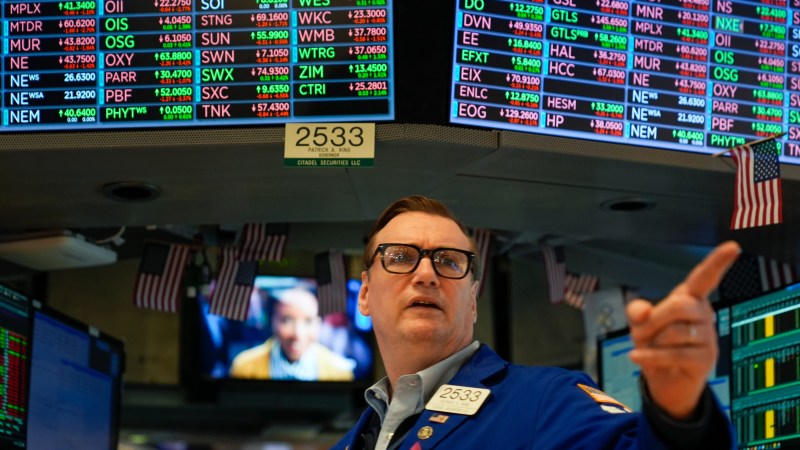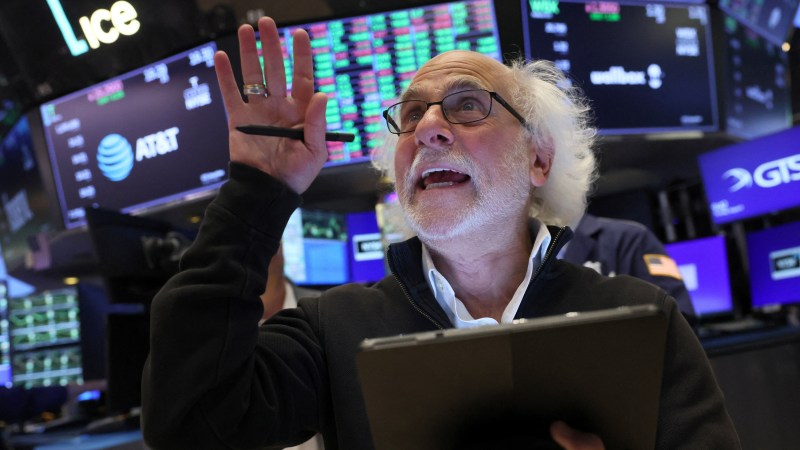US slowdown fears spark sharp sell-off in global markets
An unexpected setback for the American economy, with hiring falling sharply and the unemployment rate rising for a fourth straight month, sparked a sharp sell-off on global stock markets yesterday.
The weak data and the US Federal Reserve’s decision this week to hold interest rates at the present 23-year high of 5.25 per cent to 5.5 per cent increased fears about growth prospects in the world’s largest economy. It also raised the possibility that the American central bank may be forced to play catch-up at its September meeting after the Bank of England cut the cost of its borrowing on Thursday.
The latest figures from the Labor Department showed that employers had added only 114,000 jobs in July, 35 per cent fewer than forecasters had expected, and that unemployment was now up to 4.3 per cent, the highest level since October 2021.
Stephen Brown, deputy chief North American economist at Capital Economics, the consultancy, said: “The sharp slowdown in payrolls in July and sharper rise in the unemployment rate makes a September interest rate cut inevitable, and will increase speculation that the Fed will kick off its loosening cycle with a 50-basis-point cut or even an intra-meeting move.”
The odds of a half-point cut by the Fed jumped in financial markets after the jobs report was released. Traders priced in a 63 per cent chance of 0.5 per cent, up from 22 per cent a day earlier.
Investors were already rattled by downbeat earnings updates on Thursday from Amazon, the world’s biggest retailer, and Intel, the chip producer. In a first reaction to the disappointing results on the Asia Pacific markets yesterday morning, Japan’s Nikkei 225 suffered its largest one-day decline since October 20, 1987. The sell-off continued in Europe, with all the big exchanges opening in the red.
In London, the FTSE 100 closed down 108.65 points, or 1.3 per cent, at 8,174.71, driving it to its worst weekly decline since mid-January. The Stoxx Europe 600 index of the Continent’s biggest companies suffered its worst daily fall since March 2022 and leading indices in Germany and France were down by 2.3 per cent and 1.6 per cent, respectively.
In the UK’s government bond market, the price of two-year gilts rose at its fastest pace this year, pushing the yield down by 28 basis points. Bond yields and prices move in opposite directions, so ten-year gilt yields fell by a similar degree. Brent crude, the international oil price benchmark, fell 1.4 per cent to just above $78 a barrel.
Wall Street was sharply lower at the start of trading and the flight from equities continued. By the close in New York the technology-dominated Nasdaq Composite was down 417.98 points, or 2.4 per cent, at 16,776.16, pushing the index into official correction territory with a drop of more than 10 per cent from its record close of 18,647.45 on July 10. The more broadly based S&P 500 was down 1.8 per cent at 5,346.56, ending its worst week since mid-April. The Dow Jones industrial average shed 610.71 points, or 1.5 per cent, to 39,737.26 ending a four-week winning streak.
The yield on two-year US treasury bonds was below 4 per cent for the first time since May 2023, down 0.28 percentage points to 3.88 per cent in midday trading.






